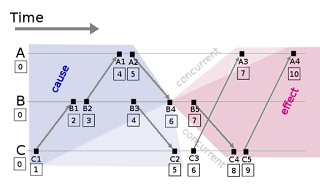I don't have a frame of reference for mob programming in a co-located environment, besides conference (or team exercise) workshops that didn't involve production code.
On a video call, the driver is still always explicitly defined as the person sharing their screen and tools. This is similar to the person physically having the keyboard when you are all sitting around a table.
The navigator can either be more implicit, move around or be strictly defined by a process. If an implicit navigator doesn't emerge for the current commit, it should be considered normal to quickly nominate one as needed. Over time, we normalize the phrase "can you navigate [that change]?" in response to a proposal.
Due to latency, in a video call environment there is a sort of Lorentz time where you may hear overlapping voices when someone else doesn't, and vice versa. It all depends on how much latency each video link is experiencing, and the adjustments that software makes can be jarring, such as video freezes or audio being delivered 10-20 seconds later.
 |
| "Sorry, two people talking over each other" "Really??" |
I'm sure though everyone has already experienced people talking over each other in a physical room: it isn't exclusively a remote working problem and relies on team interactions more than technology.
We also want to communicate and especially give feedback through voice, as people's faces are not always visible to a driver looking at code; nodding doesn't necessarily help.
Perhaps a bigger problem is the fact that video calls don't allow side conversations to happen, as there is a single audio channel that our ears cannot separate into directions. This is likely to impact a massively parallel EventStorming around a whiteboard, less so an ensemble of 3-4 people trying to get to a consensus on their next move. The side conversations however include those famous water cooler talks, bumping into people in the kitchen or while on a break.
Your theory of mind might have more trouble cutting through the limited signal, and understand in what mental state other people in the team are; and whether today's problem is more due to Internet connection trouble, or a real conflict between team members. The daily retrospective helps to let people put tools down, and reflect on the day; possibly proposing experiments for the next session.
Looking at the world around me, I'm quite sure I would be as depressed by remote work as many, if it consisted of me being alone for most of the day. So due to mob programming I have a different perspective on how incredibly engaging working from home can be.
Stay tuned for the next (and last) part of this post, Methodology.
Image by Duesentrieb.


No comments:
Post a Comment